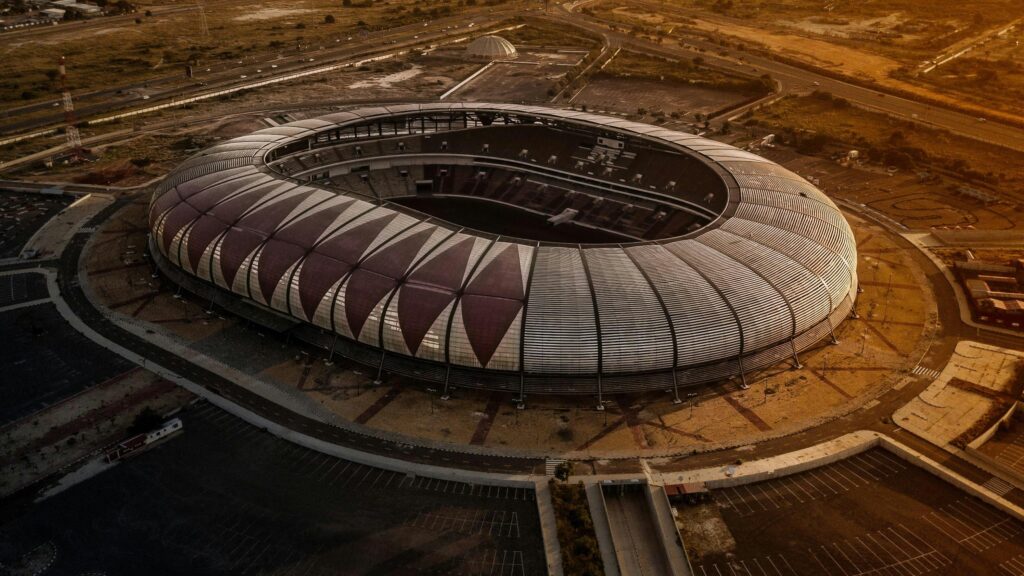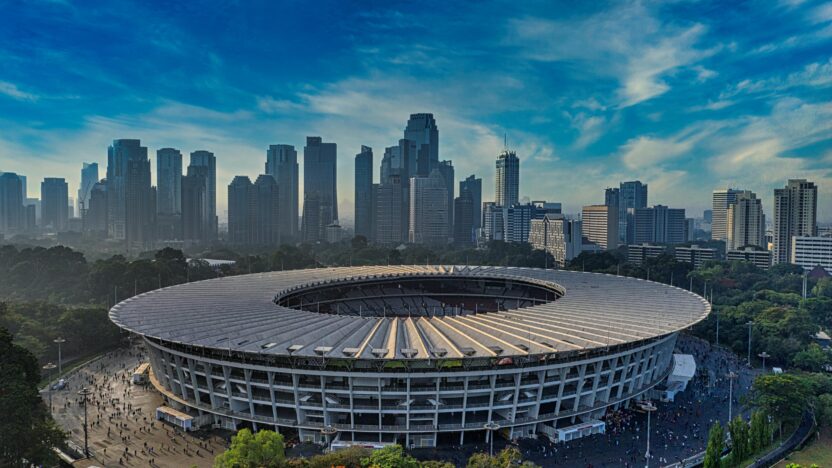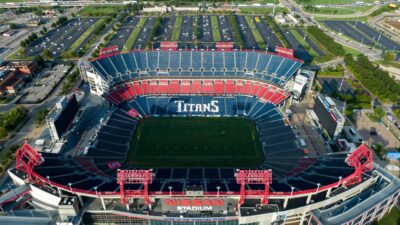Introduction
The construction of stadiums has evolved dramatically over the decades, transforming from rudimentary open-air arenas into sprawling, multi-purpose marvels that redefine modern infrastructure. Today’s stadiums are no longer confined to hosting soccer matches or football games; they serve as dynamic entertainment hubs, economic engines, and cultural landmarks that embody a city’s ambition. From Las Vegas’ state-of-the-art Allegiant Stadium to Saudi Arabia’s FIFA World Cup 2034 venues, these structures are feats of structural engineering, blending sustainability, technology, and community engagement.
Structural engineering lies at the heart of these projects, ensuring safety, durability, and efficiency in buildings that must withstand seismic forces, wind loads, and the dynamic energy of sports fans. Modern stadiums demand precision in the construction process balancing concrete foundations, steel frameworks, and roof systems while accommodating spectators with clear sightlines, sound acoustics, and cutting-edge amenities. For example, facilities like SoFi Stadium in California integrate retractable roofs and AI-driven crowd control, setting new benchmarks for multi-purpose functionality.
The Middle East, a hotspot for large-scale stadium construction, is pioneering projects like Saudi Arabia’s Qiddiya Entertainment City, a $500 million sports and entertainment complex designed with modular precast components and solar-powered systems. Similarly, Las Vegas continues to innovate with venues like the Allegiant Stadium, which combines steel cantilever designs and artificial turf with smart LED lighting to enhance the fan experience. These projects highlight the growing emphasis on sustainability—rainwater harvesting, energy-efficient HVAC, and low-carbon concrete—are now industry standards.
As the stadium design and construction advances, the integration of BIM modeling, digital twins, and AI-driven analytics ensures error-free execution of complex structures. Whether it’s a high school stadium prioritizing cost efficiency or a FIFA-grade soccer arena with seismic-resistant foundations, the collaboration between architects, engineers, and construction firms remains pivotal. With facilities increasingly serving as community landmarks and economic catalysts, the stadium industry stands at the intersection of innovation and tradition, shaping cities and sports legacies for generations to come.
The Key Role of Structural Engineering in Modern Stadiums Design
Unlike standard commercial buildings, stadiums are uniquely complex structures that must support massive loads, extensive roof spans, and fluctuating crowd movements. Structural engineers must ensure that the stadium building can handle these challenges while placing spectators as close as possible to the field to create an immersive atmosphere, allowing both team and fans to feel more engaged with the action of the event:
Dynamic Load Considerations
A stadium experiences extreme variations in load. A full-capacity football match, for example, can have 70,000+ fans moving in synchronization, jumping, stomping, and cheering, creating lateral and vertical forces that affect the structure. Engineers conduct complex load simulations to ensure the stadium:
- Absorbs vibrations without structural failure.
- Balances weight distribution to prevent uneven stress points.
- Accounts for emergency evacuations where thousands of people may rush to exits at the same time.
Roof and Cantilever Structures
Modern stadiums feature large-span roofs, designed to:
- Provide shade and shelter for spectators.
- Support high-tech lighting, screens, and audio systems.
- Resist strong winds and seismic forces while keeping structural weight minimal.
Many contemporary stadiums and arenas use cantilevered roof designs to provide column-free seating areas, enhancing the spectator experience. Allianz Arena (Germany) and Lusail Iconic Stadium (Qatar) are prime examples of innovative stadium roofing systems.
Sustainable and Smart Stadiums
Sustainability is a growing focus in stadium engineering. Features like:
- Solar-powered lighting & energy-efficient HVAC systems
- Rainwater harvesting & water recycling
- Self-cooling technology for extreme climates are becoming industry standards.
Additionally, smart stadiums incorporate:
- AI-powered fan engagement systems
- Automated crowd control monitoring
- Dynamic seat allocation to enhance visitor experience

Multi-Functionality and Modular Design
Stadiums today are not just for sports—they are multi-functional venues designed for concerts, corporate events, and exhibitions. Modular construction enables stadiums to be reconfigured for different purposes, ensuring better return on investment and operating costs for host cities.
For example:
- Tottenham Hotspur Stadium (UK) has a retractable pitch, allowing it to transform between football and NFL matches.
- SoFi Stadium (USA) was designed to host NFL games, concerts, and film premieres.
With these considerations in mind, who are the top firms driving large-scale stadium and arena construction projects worldwide? Let’s explore.
Leading Stadium Structural Engineering & Construction Firms
J&F India
🔗 Visit J&F India
Expertise: BIM-driven stadium structural engineering, steel detailing, and precast modeling.
Key Strengths:
- Structural optimization for large-scale sports arenas.
- Advanced clash detection for error-free execution.
- Sustainable stadium precast solutions.
- Ability to generate additional revenues through strategic site selection and innovative design.
Mold-Tek Technologies Limited
🔗 Visit Mold-Tek Technologies Limited
Expertise: Long-span roof truss engineering, rebar detailing, AI-driven structural analysis.
Key Strengths:
- Optimized steel structures & cantilever stadium roofs.
- Advanced BIM integration for large-scale venues.
- AI-enhanced material efficiency & cost reduction.
GBC Engineers
🔗 Visit GBC Engineers
Expertise: Climate-resilient stadium structures, AI-powered digital twins.
Key Strengths:
- Wind load & seismic-resistant engineering.
- Innovative, lightweight stadium materials.
- Real-time stadium monitoring via AI digital twins.
REPL Infosystems
🔗 Visit REPL Infosystems
Expertise: MEP engineering, HVAC optimization, stadium lighting solutions.
Key Strengths:
- Smart stadium cooling & ventilation systems.
- Advanced LED sports lighting & acoustics engineering.
- AI-driven power management & energy-efficient stadiums.
Trikaal Tech Enterprises Private Limited
🔗 Visit Trikaal Tech Enterprises Private Limited
Expertise: Steel detailing, seismic-resistant stadium foundations.
Key Strengths:
- Aerodynamics engineering & wind tunnel testing.
- Seismic stability for high-risk locations.
- Lightweight prefabricated stadium elements.
Precision Precast Solutions Private Limited
🔗 Visit Precision Precast Solutions Private LimitedExpertise: Modular precast detailing, prefabricated stadium components.
Key Strengths:
- Faster construction timelines with modular precast.
- Precast concrete stadium seating solutions.
- High-durability stadium superstructure elements.
- Expertise in providing various construction services specifically for stadium projects.
Oriole Design Tech Solutions LLP
🔗 Visit Oriole Design Tech Solutions LLP
Expertise: BIM-driven stadium planning, steel detailing, precast design.
Key Strengths:
- Automated clash detection for precision engineering.
- AI-based material tracking & waste optimization.
- Smart stadium digital twin technology.
AECOM
Expertise: Stadium project management, smart stadium technology.
Notable Projects:
- London Olympic Stadium – Built for 2012 Summer Olympics.
- Rio de Janeiro Olympic Park – Venue for 2016 Olympics.
Arup
Expertise: Seismic-resistant stadium engineering, digital twin technology.
Notable Projects:
- Beijing National Stadium (“Bird’s Nest”) – Landmark Olympic venue.
- Allianz Arena (Germany) – Self-illuminating facade.
- Qatar 2022 World Cup Venues – Multiple stadium contributions.
Populous
Expertise: Stadium architecture, retractable roof design, multi-purpose venue development.
Notable Projects:
- Tottenham Hotspur Stadium (UK) – Retractable pitch, multi-use venue.
- Wembley Stadium (UK) – One of Europe’s largest stadiums.
- Yankee Stadium (USA) – High-tech MLB venue.
HOK
Expertise: AI-driven stadium infrastructure, eco-friendly stadium design.
Notable Projects:
- Mercedes-Benz Stadium (USA) – 360-degree retractable roof.
- Rogers Place (Canada) – High-tech sports arena.

Stadium Construction Boom in the Middle East: FIFA 2034 and Beyond Operating Costs
Saudi Arabia: The Host of FIFA World Cup 2034
With Saudi Arabia officially hosting FIFA 2034, the country is undergoing a massive stadium construction and renovation boom. Public funding plays a significant role in financing these large projects, placing a substantial financial burden on taxpayers. In preparation for this event, Saudi Arabia is investing billions in cutting-edge stadium projects, integrating modular stadium construction companies, smart stadium technologies, and energy-efficient infrastructure.
Key Developments in Saudi Arabia: Roof Innovations
- NEOM Smart City Stadium – A futuristic AI-integrated sports arena, designed as part of the NEOM megacity project.
- King Abdullah Sports City Expansion – Upgrading existing multi-purpose stadiums with AI-powered fan experience systems and dynamic crowd management tools.
- Sustainable “Green Stadiums” – Saudi Arabia is focusing on constructing zero-emission sports facilities, powered by solar energy and water recycling systems.
These developments will shape the future of football stadiums, soccer arenas, and high-performance sports venues, ensuring the region meets FIFA’s global sustainability and safety standards.
Conclusion
The stadium industry is undergoing a paradigm shift, with a strong emphasis on technology, sustainability, and modular building design. As sports and entertainment venues become more technologically advanced, structural engineers and AEC firms must adopt AI, BIM, and digital twin technologies to stay competitive.
Why BuildTwin is the Go-To Marketplace for Stadium Projects: Expertise
For stadium developers, BuildTwin offers unparalleled advantages:
✅ Access to a global pool of top engineering firms.
✅ AI-driven quality control & automated project tracking.
✅ Effortless bid & vendor management via a fully integrated ERP system.
Get Started with BuildTwin Today
Whether you’re designing a FIFA World Cup stadium or constructing a multi-purpose sports complex, BuildTwin connects you with the right vendors to your local requirements and ensure success. >> Get Started



